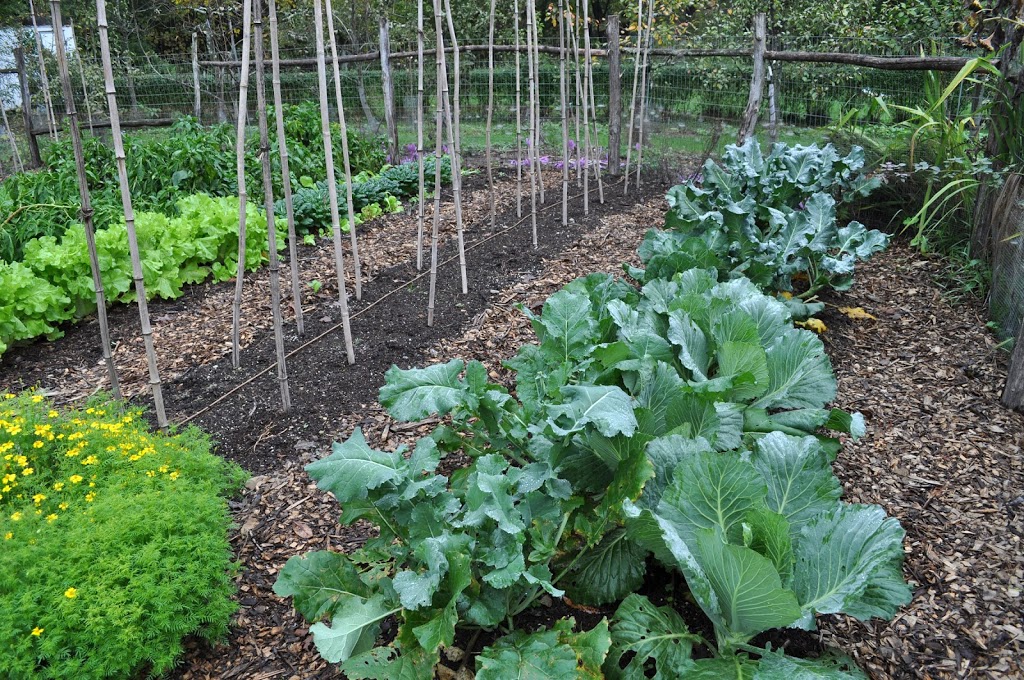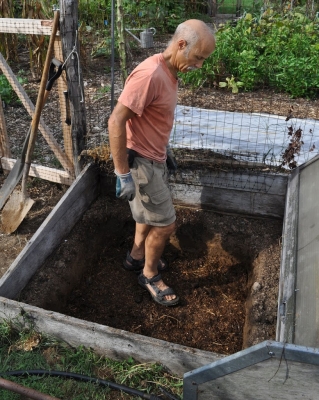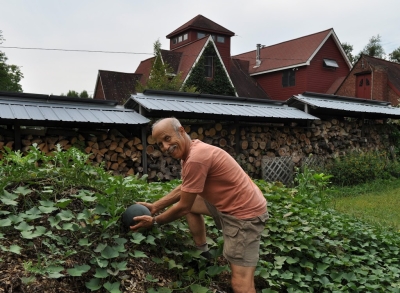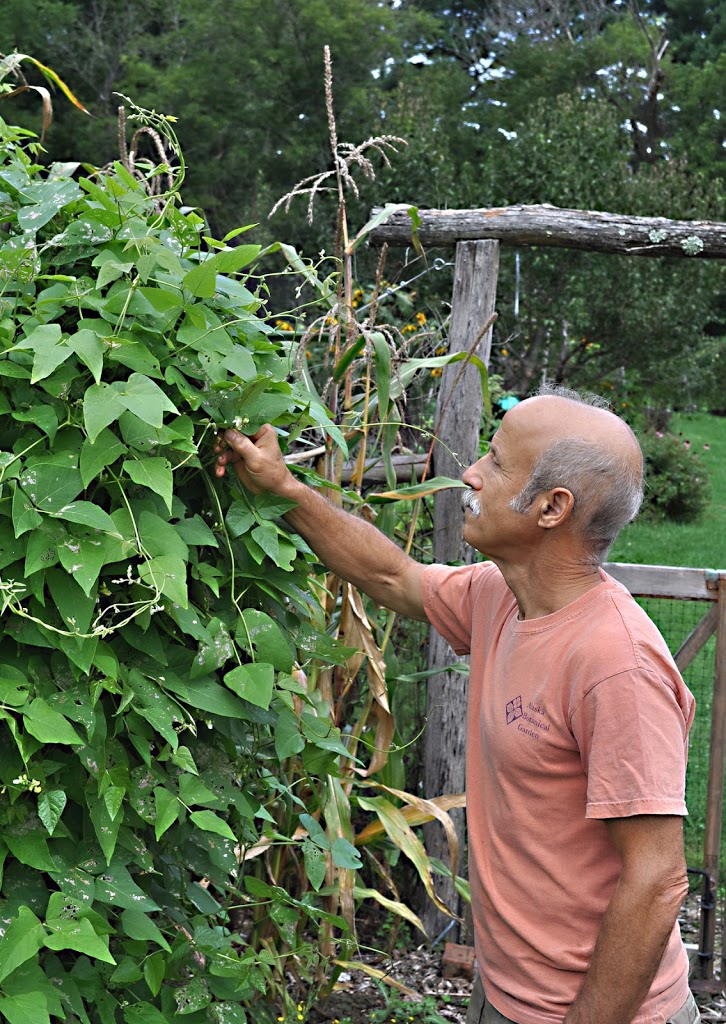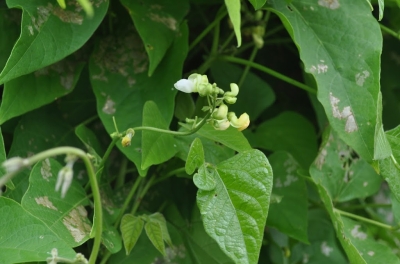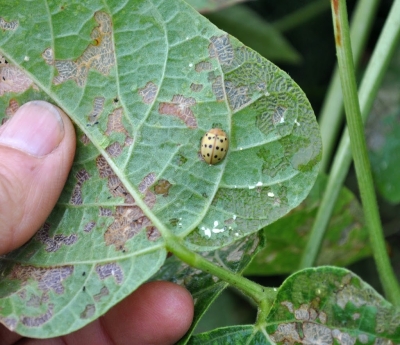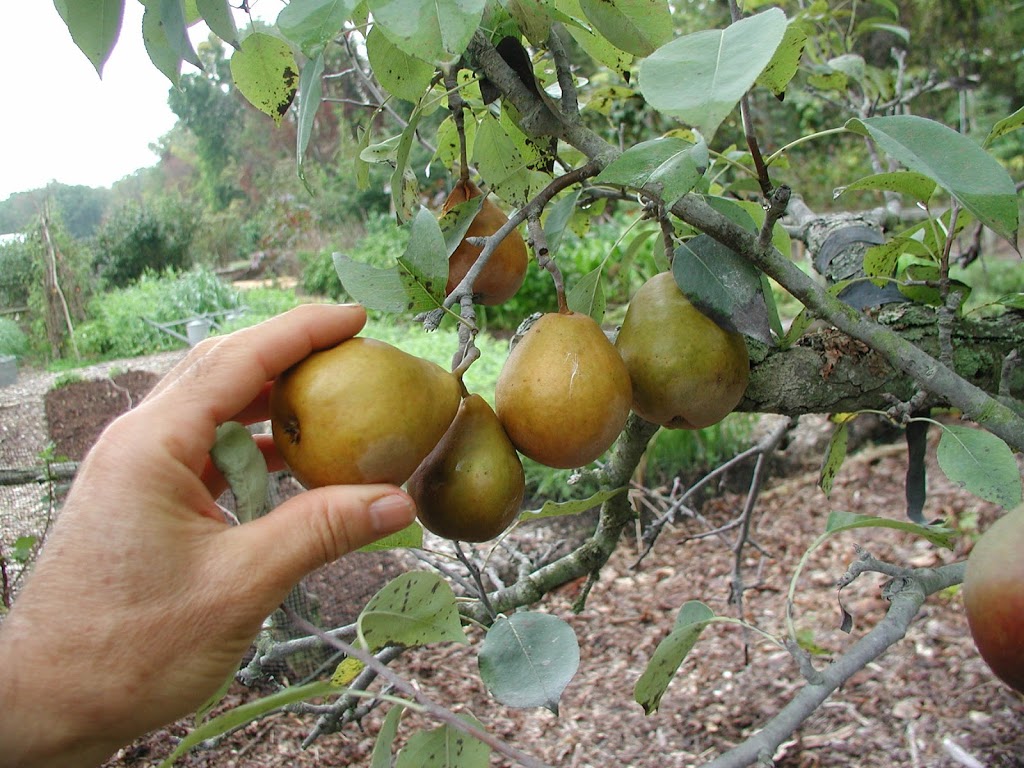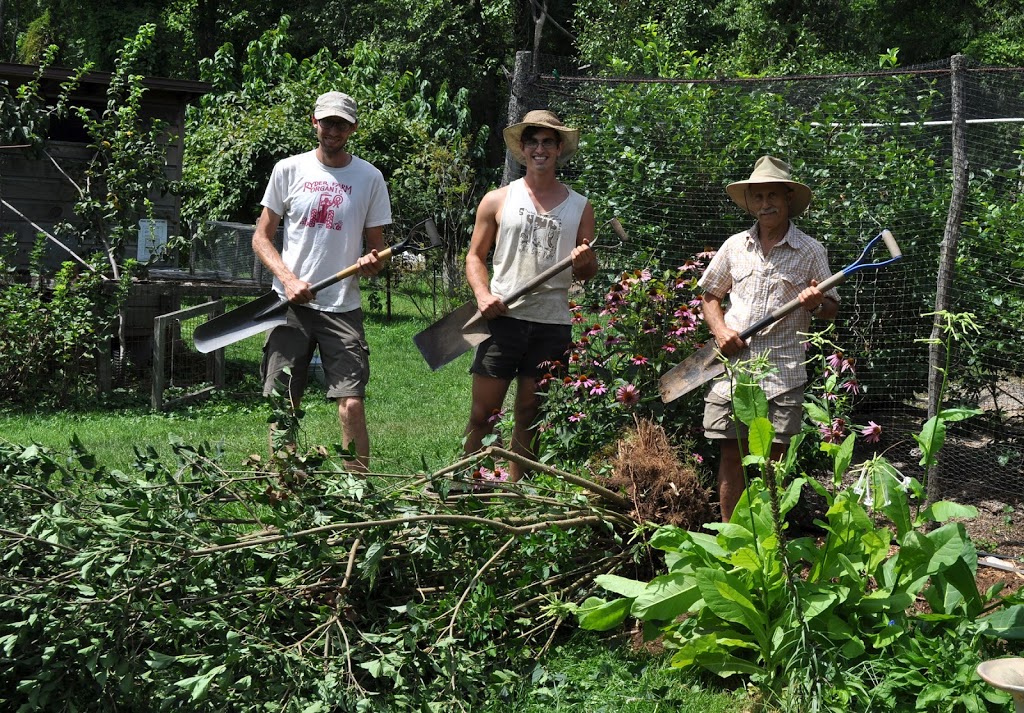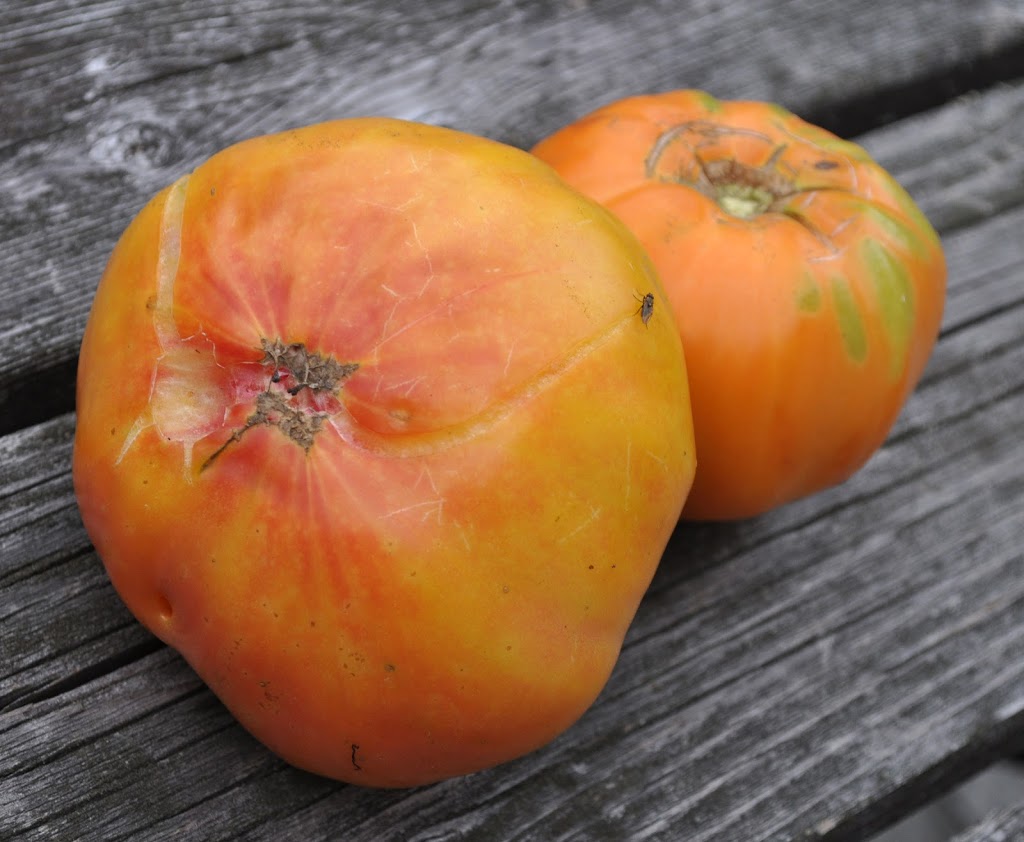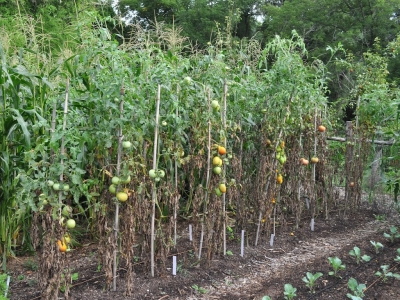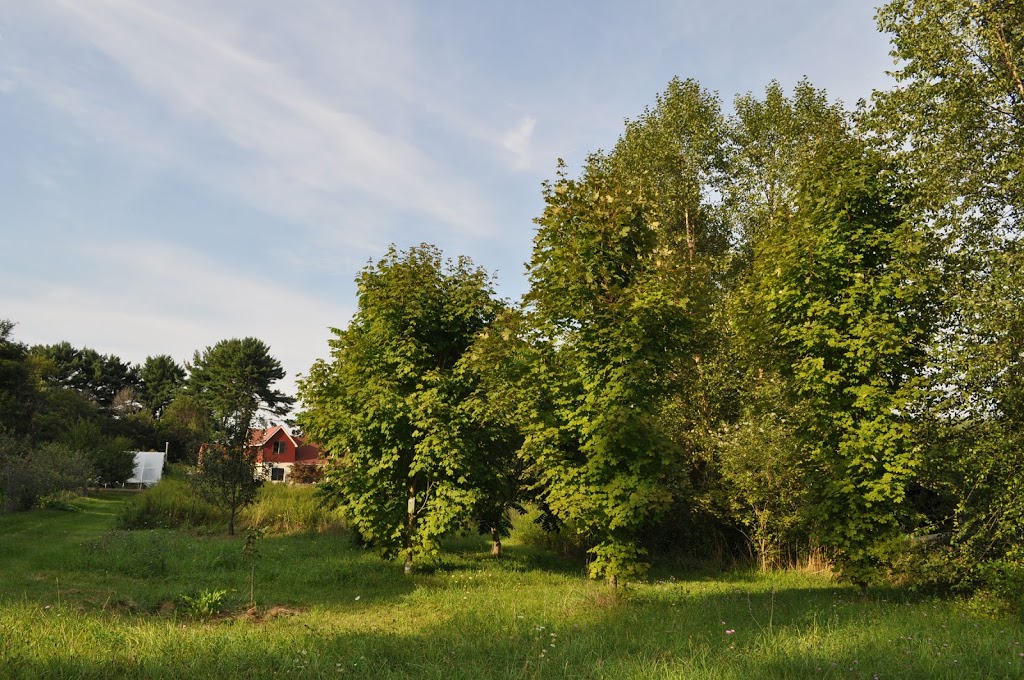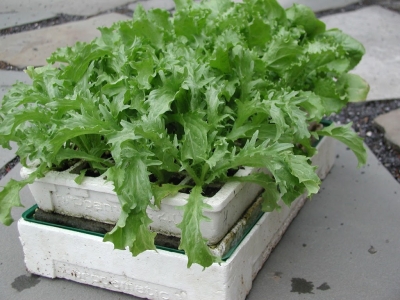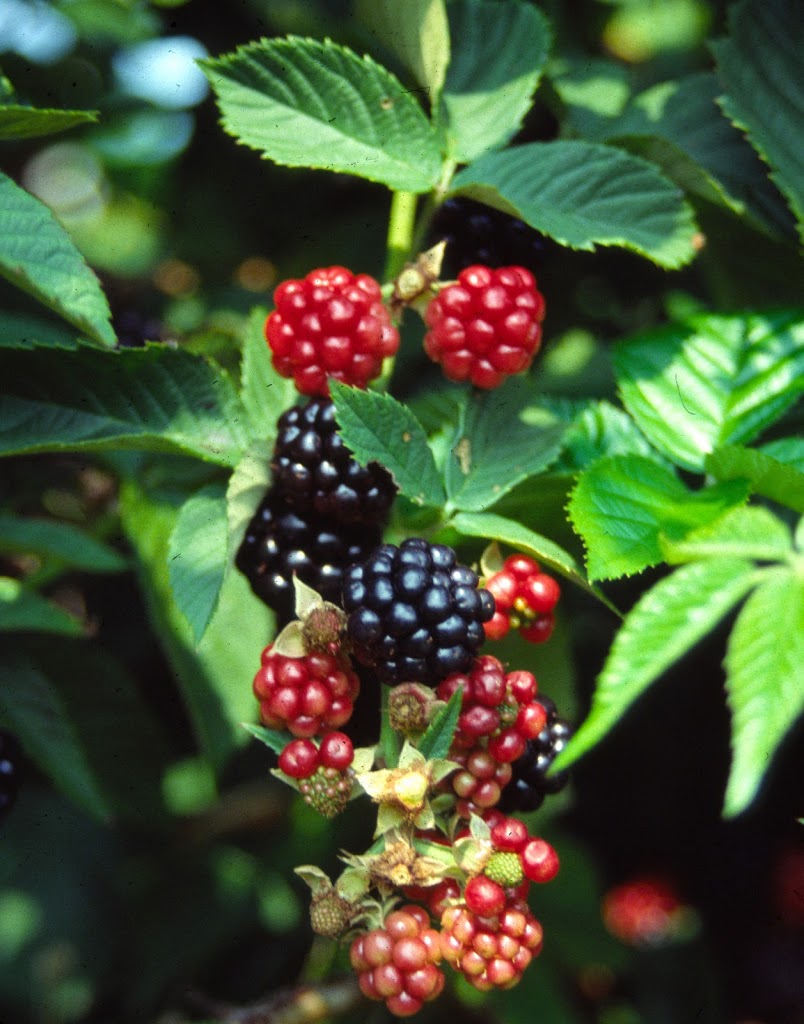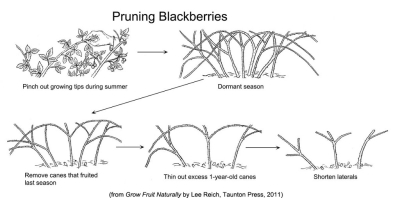It Ain’t Over — The Fall Garden Begins
/0 Comments/in /by Lee A. ReichMelon-ic Efforts
/2 Comments/in /by Lee A. ReichBeans, Beans, . . .
/2 Comments/in Gardening/by Lee A. ReichPayday Here, Beginning with Pears and Persimmons
/9 Comments/in Gardening/by Lee A. Reich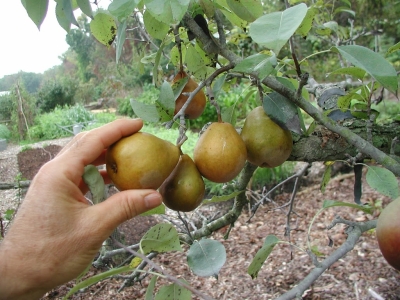 |
| My Seckel pear, ready to harvest |
 |
| Magness, one of the best of the European pears |
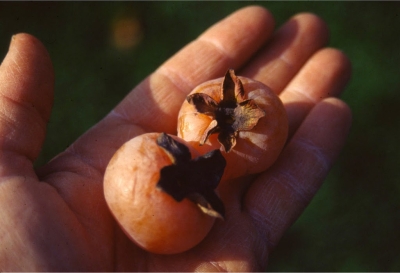 |
| Szukis persimmon |
Do you want to grow fruit but think you don’t have room? I’ll be giving a workshop “Fruit for Small Gardens,” covering the fruits and growing techniques needed to reap delectable rewards from spaces as small as a balcony to as “large” as a small suburban yard. The venue is Stone Barns in Pocantico Hills, NY on September 22nd from 1-3 pm. For more information, see http://www.stonebarnscenter.org/products/backyard-fruit-for-small-gardens.html
—————————————–
To experience firsthand the possibilities in home-grown fruits, come to my workshop BACKYARD FRUITS: A TASTING AND A WORKSHOP, which will be held here at my farmden. Learn how to grow delicious fruits organically and then taste some that are in season, such as pears, grapes, pawpaws, persimmons, and kiwifruits. The workshop is Oct. 6th, 2-5 pm. Contact me for more information and registration.
Demise of Miss Kim, Sweet corn
/0 Comments/in /by Lee A. Reich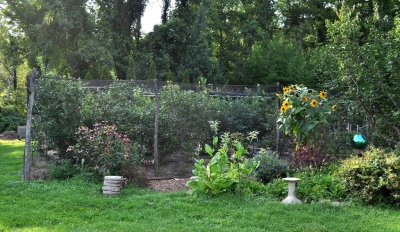 |
| Perennial bed, minus Miss Kim |
 |
| Golden Bantam corn, grown here on the farmden |
Tomatoes! (And a Workshop)
/3 Comments/in /by Lee A. Reich |
| Kellog’s Breakfast, strange name but beautiful and delicious |
It’s been fun comparing flavors of fresh slices of tomatoes. Brandywine and Belgian Giant, for instance, are both scrumptious, with Belgian Giant being a little more tomato-y. Cherokee Purple is also delicious, this one with a rich, slightly smokey flavor. In addition to my usual favorites, one new variety (for me), Kellog’s Breakfast, will become a regular in my garden. This heirloom has an odd name and a flesh that is at the same time meaty and juicy. The skin of these large fruits have a beautiful orange color with occasional deep red blushes.
Not all heirloom tomatoes are delicious. The main thing the heirloom Stupice (pronounced stoo-PEECH-ka) has going for it is earliness. The fruits are small and ripen in clusters. We’ve been eating these fruits for weeks. Of course, since the later, better-tasting varieties have been ripening, we’ve been ignoring Stupice, for fresh-eating, at least. It’s better than any other supermarket tomato but not as good as Belgian Giant, Cherokee Purple, Rose de Berne, Kellog’s Breakfast, Sungold, and the other topnotch varieties I grow.
One heirloom tomato garnering special attention this year is Blue Beech, a variety that reached Fedco (www.fedcoseeds.com) from someone in Vermont who got it from her neighbor’s niece’s uncle(??) who brought it to Vermont from Italy during World War II. I tasted sauce made from Blue Beech at the farm of that original “someone in Vermont” and right then and there decided to grow it for its unique flavor and orangish color.
I’ve grown Blue Beech for a few years now and this year finally decided to jar it up separately from my other varieties. (All my other tomatoes get thrown into one big pot for collective canning.) My Blue Beech sauce does not have that orangish color, but does have a distinctive, very rich flavor.
Blue Beech is elongated, so looks like a canning tomato. Besides being good for canning, this tomato also has excellent fresh flavor, something that’s true for a number of canning tomatoes. Other varieties that have excellent flavor either fresh or cooked are Amish Paste and Anna Russian.
And then there are tomatoes with poor flavor “no matter how you slice them” — fresh or canned. Roma is a often used as a generic name for any canning tomato but is also the name for a specific and, unfortunately, widely grown variety of canning tomato. The variety with this name is bland cooked or fresh.
Yes, all things tomato does include some tomato diseases, just as it does every year. Gardeners and farmers seem hypersensitive to tomato diseases ever since the late blight outbreak here in the Northeast a few years ago. It made everyone start looking more closely at their plants, a good thing, with even organic growers ready to spray at the first symptom of any disease problem, not a good thing.
I’m not planning to spray my tomatoes for late blight or any other problem. Late blight, although dutifully reported present at various locales by the Cooperative Extension Service, needs cool temperatures, humid or rainy conditions, and wind to loft it from one site to the next in order to develop and spread. We had those conditions a few years ago, in addition to multiple sources of infection from tomatoes distributed from transplants sold at “big box” stores. We don’t have that weather or the sources of infection this year (at least not as of this writing).
Late blight notwithstanding, my tomatoes, trained to single stems, are pretty much defoliated for their first foot or two. The culprits are early blight, characterized by tan blotches with concentric, darker rings, and septoria leaf spot, characterized by small, round spots with tan centers. Both diseases overwinter on infected tomato debris and wild host plants such as jimson weed.
My approach to keep early blight and septoria, which rear their ugly heads here every year, in check are to clean up all tomato debris at the end of the season, to plant tomatoes each year where they have not grown for the previous 2 years, and to mulch to keep spores from splattering up to the plants. And one more thing: not to worry. Every year, my tomatoes lose some leaves to these two diseases, and every year I harvest plenty of pesticide-free, juicy tomatoes bursting with flavor.
Deferred Gratification
/4 Comments/in /by Lee A. Reich |
| My mini forest, 15 years old: sugar maple, river birch, buartnut |
Not that deferred gratification is all that bad. After all, except for when I began my first garden many decades ago (Madison, Wisconsin on August 1st, and I did reap some beans and tomatoes), all the while that I’m planning for the future I am reaping other rewards of past efforts. This week for instance, I’ve harvested onions, seeds of which I sprinkled into furrows in a seed flat in a cool greenhouse back in February. I’m also enjoying tomatoes of all stripes, the result of seeds planted in early April. And I see a reasonable crop of Magness, the best-tasting of all my pears, getting ready with their final stages of ripening for harvest in a few weeks.
Blackberries Galore!
/8 Comments/in /by Lee A. Reichhttp://www.phillyorchards.org/volunteer/schedule,
Fruit Growing Simplified
After succumbing to temptation and plucking a few of the first blackberries of the season underripe, I can wait for finger-staining ripeness. Coming upon a fully colored blackberry, I give it a gentle pull. A dead ripe berry should drop into your hand with only the slightest coaxing. Eat.
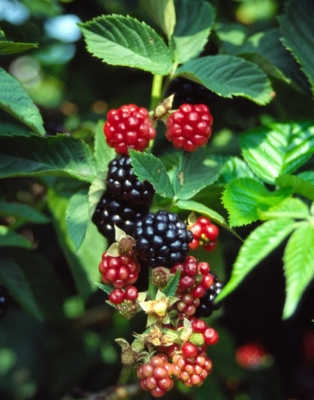 |
| Chester blackberry ripening |
In the wild, blackberries are found growing almost everywhere. Some of these wild plants creep along the ground, while others grow upright like small trees. These growth habits have been bred into cultivated blackberries, so you can choose from erect varieties, which are the most cold-hardy and heat tolerant, as well as semi-trailing and trailing varieties. Trailing varieties, with lanky, flexible canes, are sometimes called “dewberries.” Western trailing blackberries yield large, wine-colored to black fruits having distinctive flavors. Varieties also have even been selected or developed that lack those ominous thorns.
Blackberries have perennial roots and biennial canes. With most varieties, a cane bears fruits in its second season, then dies. In any growing season, as older canes are fruiting, then dying, new ones are making their first season of growth. Any planting, then, has both one and two-year old canes, so offers an annual harvest. The plants spread by tip layering, that is, by hopscotching along as arching or trailing canes root at their tips and make whole new plants which go on to tip layer and make more plants, as so on. Unfettered, blackberries grow to become a tangled patch of canes.
Although wild blackberries often grow along the partially shaded edges of woods, the plants fruit best and are healthiest in full sunlight. As with most cultivated plants, well-drained soil rich in organic matter is the ideal.
Spacing, which may be as close as 3 ft. apart to more than 6 ft. apart, depends on the type of blackberry and the training system. Erect blackberries are self-supporting, but other types are easier to manage if trained by being tied up to a sturdy pole, on a trellis of wires strung between sturdy posts, or on a fence.
Blackberrys’ biennial canes and their aggressive spread make a case for annual pruning. On all but the trailing or trellised semi-erect types, prune twice each year. The first pruning takes place during summer; the tip of each new cane needs to be nipped off just as it reaches a height of 3 ft. Pinching causes branching and helps keep plants upright.
The second round of pruning, for all types of blackberries, takes place in late winter, just before growth begins. Any cane that bore fruit the previous season is cut down to the ground and the number of new canes is reduced to about 6 per clump. Finally, those lateral induced by summer nipping: They are shortened to about 18 in.
A convenient way to manage the long canes of trailing types is to let new canes trail on the ground, which they are anyway wont to do, lifting the second year canes, which will fruit, up to the wire of a trellis. If winter cold is a potential problem, those reclining canes can be left on the ground where they are easily protected for winter with a blanket of straw or leaves. Late the following winter, the old canes that fruited are cut away, the younger canes are lifted up onto the trellis, for fruiting, and new canes that season are allowed to trail on the ground. And so on year after year – all much more fun if canes are thornless.
The nice thing about blackberries is that they have few debilitating pest or disease problems. Start with healthy plants from a nursery; neighbors’ plants could harbor latent diseases, especially with age (the plants’, not the neighbors’). Prune regularly so branches can bathe in light and air, and remove any canes harboring insects or diseases. And pick berries when fully ripe.
In the cold pocket, where I live and garden, I’m somewhat restricted in the spectrum of blackberry varieties I can grow. I also have an aversion to blackberries’ intimidating thorns, which arm even the leaves, all with reverse barbs to really grab you. Years ago, I traded in the delectable, but thorny, Darrow plants for my present Chester blackberries, which are the most cold-hardy of the thornless varieties. I also grow Doyle thornless, which makes long, trailing canes that I can sometimes lay on the ground to be covered by mulch or snow for winter protection.
See my book GROW FRUIT NATURALLY for more detail on varieties and cultivation of blackberries, which can be grown just about everywhere with appropriate choice of varieties.
Upcoming Workshops & Cracking, Red Tomatoes
/0 Comments/in /by Lee A. Reich



